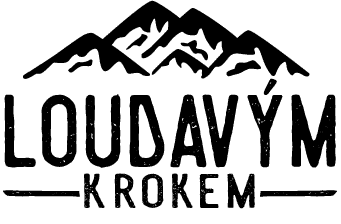Berlin is a dynamic, multicultural city full of history, art and creativity. As the capital of Germany, Berlin is home to many government buildings, museums, galleries and cultural centres. Whether you’re a lover of history, modern art or multicultural cuisine, Berlin has it all. Let’s take a look at the best times to go to Berlin and what to do, taste and see.

Where to stay in Berlin?
In the long term, Lukas and I prefer the Motel One Berlin-Potsdamer Platz hotel chain in Germany , where they have smaller rooms, but they are clean, at a great price and have one of the best breakfasts.
If you travel often, you know very well that a good hotel breakfast is essential. This hotel chain also has a great location in most cities and, most importantly, if you love designer interiors but don’t want to pay extra for them, it’s the obvious choice.
Weather in Berlin: when to go to the German capital
Berlin is best visited in late spring, summer or Indian summer. In the rest of the year it is quite dry here.
| Moon | Average temperature | Maximum temperature |
| January | 0,6 °C | 2,9 °C |
| February | 1,4 °C | 4,2 °C |
| March | 4,8 °C | 8,5 °C |
| April | 8,9 °C | 13,2 °C |
| May | 14,3 °C | 18,9 °C |
| June | 17,1 °C | 21,6 °C |
| July | 19,2 °C | 23,7 °C |
| August | 18,9 °C | 23,6 °C |
| September | 14,5 °C | 18,8 °C |
| October | 9,7 °C | 13,4 °C |
| November | 4,7 °C | 7,1 °C |
| December | 2,0 °C | 4,1 °C |
How to get to Berlin
By car
The journey from Prague is worth the drive, it’s not too far and you’ll spend less than 4 hours on the road, depending on which route you choose:
- A faster route takes 3 hours 47 minutes via Ústí nad Labem and Dresden straight to Berlin. You will travel 349 km.
- On the second route you will drive 431 km and the journey will take 4 hours 50 minutes. It runs through Mladá Boleslav and Liberec, then a short distance after Dresden it connects to route no. 1.
From Brno it is a bit farther to Berlin than from Prague, and you can sit in the car for about 6 hours. First you have to go to Prague and then continue along one of the two previous routes.
By train to Berlin
Direct trains run from Prague to Berlin several times a day, the journey takes just over 4 hours and the average ticket costs CZK 1,108.
From Brno to Berlin there are approximately five train connections per day, both direct and with a change. The average journey time by train is 7.5 hours, and you will pay an average of CZK 1,332 per ticket.
By bus to Berlin
Berlin is also served by the company’s buses RegioJet a Flixbus. The disadvantage is that they only run from Prague. There are both direct and connecting services, but Flixbus alone offers up to 16 connections a day to Berlin, so there’s plenty to choose from. The average ticket price is around 500 CZK, the journey takes 4 hours.
By plane to Berlin
From the Czech Republic, it is worth flying from Brno, where Ryanair flies to Berlin Schonefeld Airport. The flight takes only one hour and the ticket costs around 1000 – 1500 CZK. There are no planes from Prague due to the distance, the most convenient is to use the bus. Learn how to search for cheap flights.
How to get around Berlin
In Berlin, take advantage of the local public transport, which makes it very easy and fast to get anywhere in Berlin.
S-bahn
S-bahn are urban trains referred to as S1, S2, S3 etc. In addition to the S-bahn, there are also regional trains in Berlin, but these do not only run in the city, but also outside Berlin. Such trains are designated RE, RB and FEX.
Buses
If you want to get on a bus in Berlin, you have to wave to the driver first, otherwise they won’t even stop at the bus stop. All connections are always posted at all bus stops. Night bus routes are marked with the letter N and run every 30 minutes from approximately 0:30 to 4:30.
Taxi
Taxis are a common mode of transport in Berlin, but you often pay 3.90 euros just to get in and then another 2 euros for each kilometre. If you plan to travel less than two kilometres, you will always pay a flat rate of €6, but you must notify your driver in advance.
Tickets
You can get tickets for public transport in newsagents and vending machines, but the easiest way is via the transport company’s app. BVG . With the app, you can then buy all tickets conveniently via your phone. Ticket machines can be found in metro stations or train stations, where you can also pay by card. You will also find them in all trams, but you must pay only in cash in these machines.
For 41 euros you can buy a Berlin WelkomeCard. It’s valid for 5 days on all public transport, plus you get additional benefits and discounts on various attractions and sights. So if you’re in Berlin for a few days, it’s worth getting a card.
The most interesting sights in Berlin
In Berlin you will find many historical monuments, but also great examples of modern art. Let’s take a look at what you should definitely not miss during your visit.
Brandenburg Gate
Probably the most famous symbol of Berlin is the Brandenburg Gate, in Berlin you can look for it under the name Brandengurger Tor. It stands in the centre of the city, 26 metres high and 11 metres long. The gate is made up of six columns and five passageways, with a statue of a four-horse chariot on top, on which the goddess of victory Victoria rides into the city in a chariot.
The gate was built in 1734, it served as a customs gate in the fortification of the town. 30. 1. 1933, a parade of the NSDAP, which had just taken over Germany, passed through the gates. Today, New Year’s Eve celebrations are held annually around the gate.
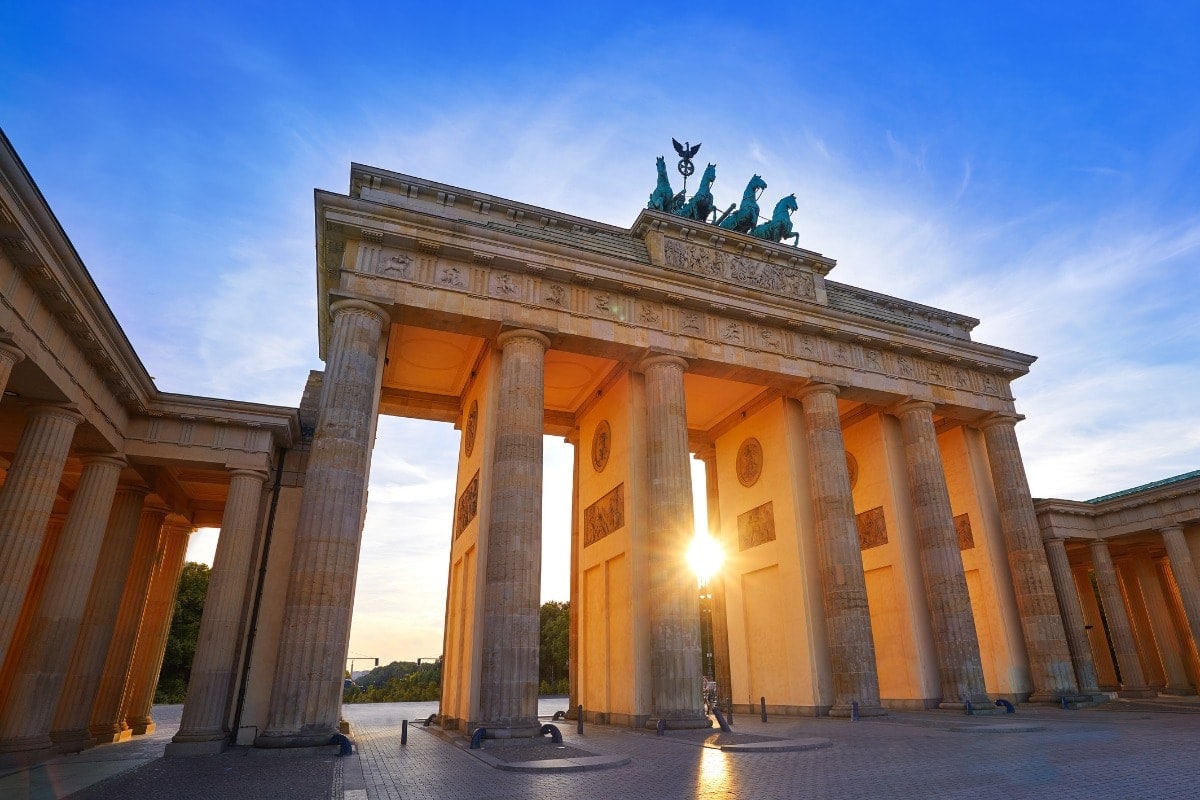
Berlin TV Tower
At 368 metres high, the tower is the tallest free-standing building in the European Union. At a height of 203 metres is a large sphere, inside which you will find a view of the city and a revolving restaurant a little higher up.
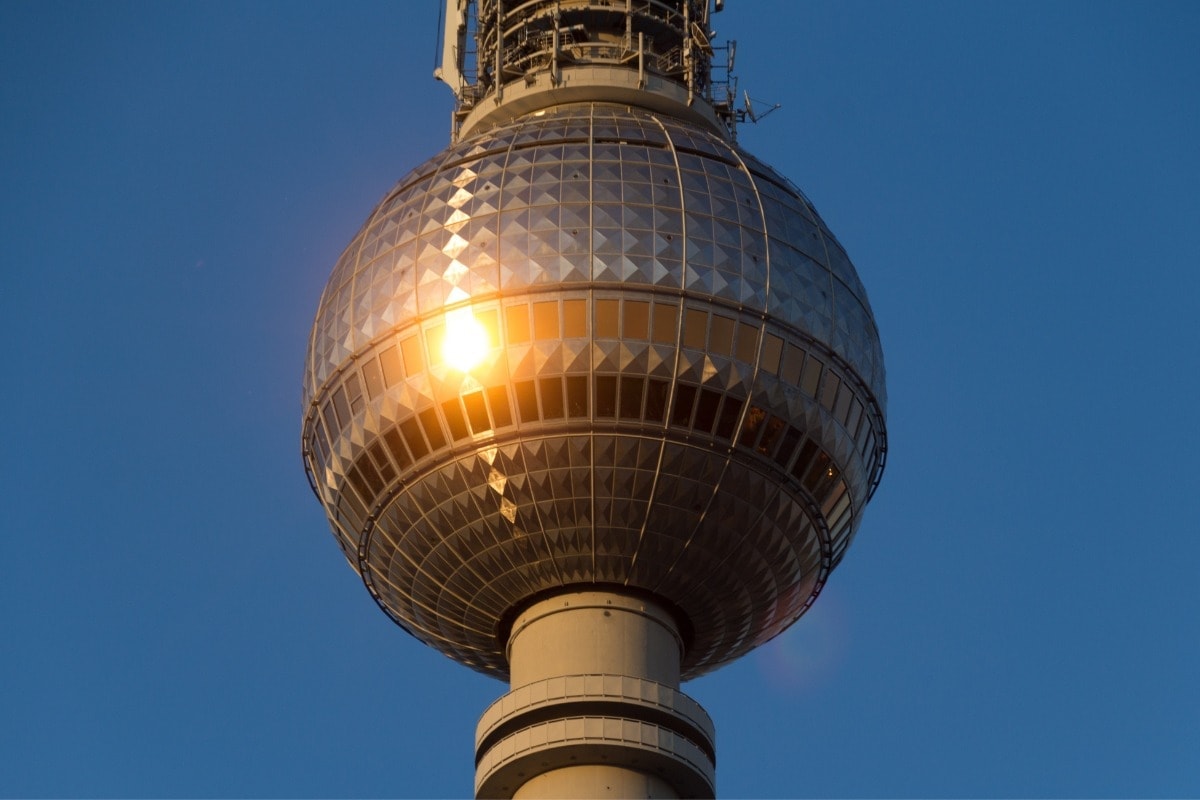
Reichstag – German Parliament
The Reichstag building serves as the seat of the German Parliament. The building is interesting for its glass dome, which houses an observation deck. From there, tourists can enjoy views of Berlin and the main Chamber of Deputies, even during the debates themselves. The viewpoint is free, but you must register in advance.
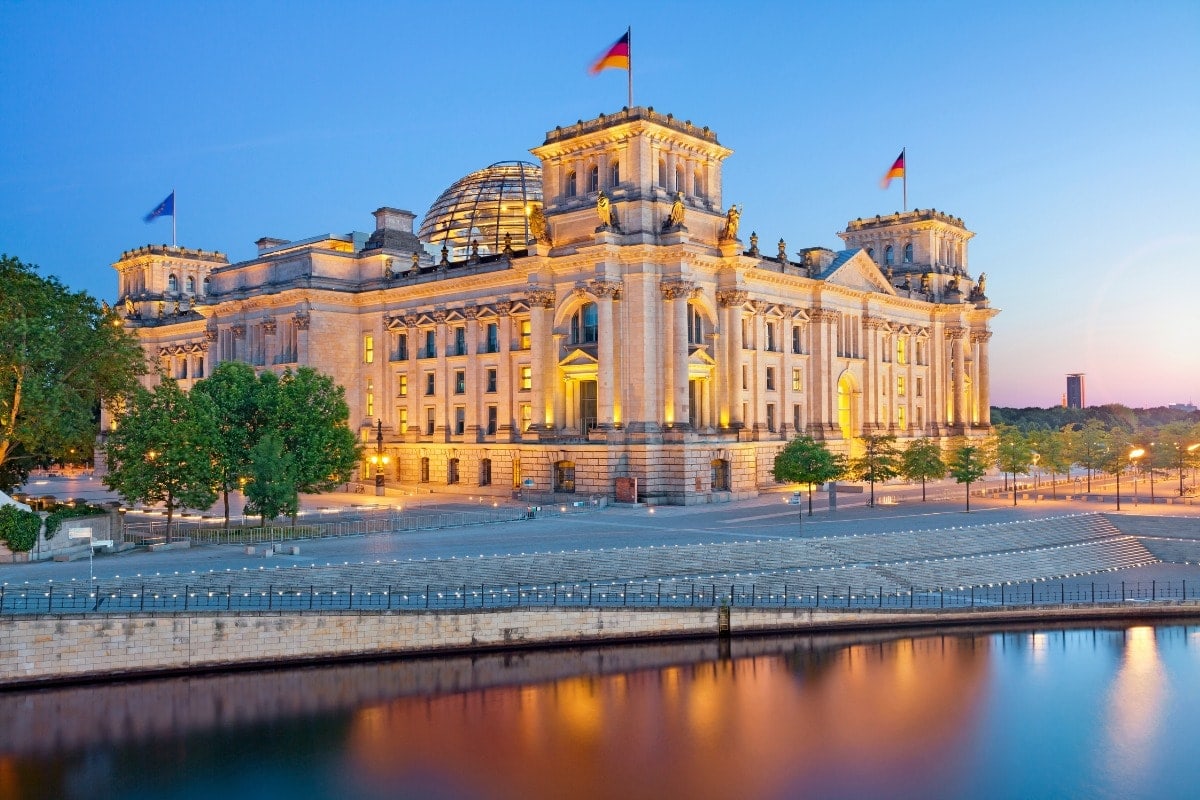
Berlin Cathedral
This evangelical church is the highest Christian cathedral in Berlin, standing in the very centre of the city. The church began to be built in 15. century and after several reconstructions it was completed in 1905. The building will enchant you both with its facade and interior, you can look inside every day, the entrance fee is 9 euros.
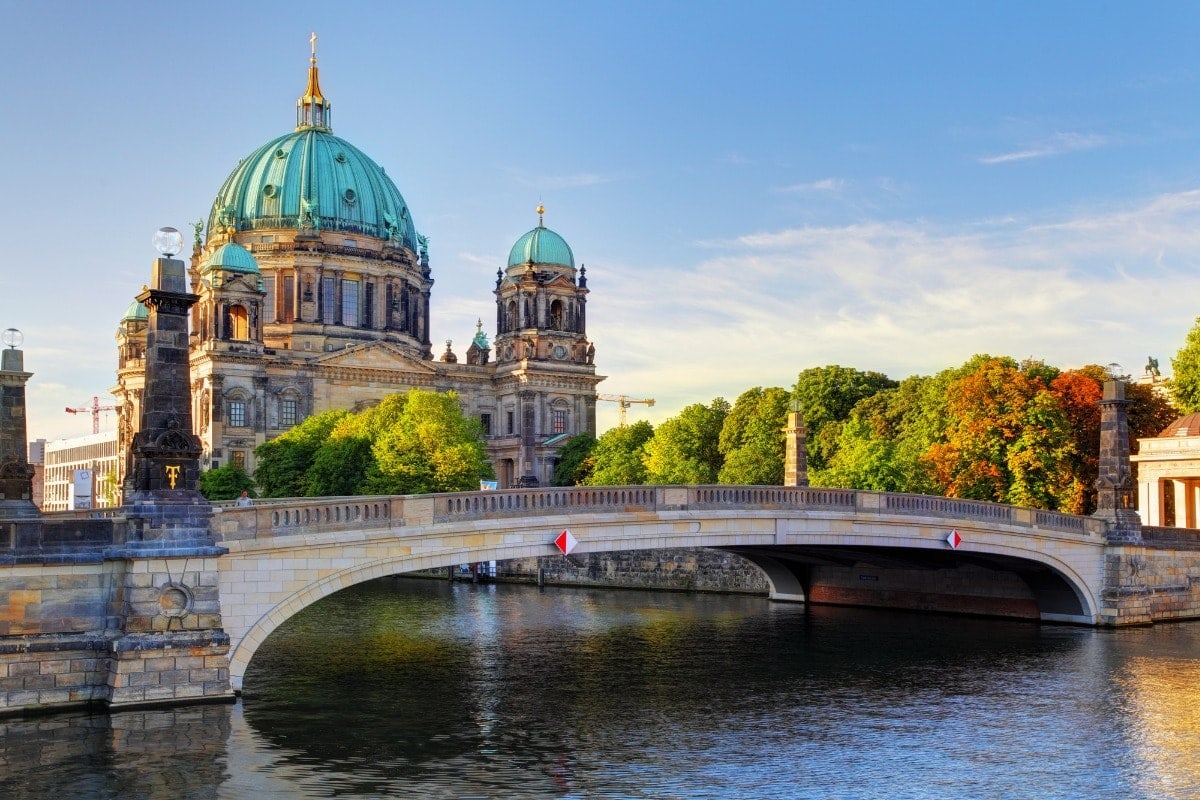
Holocaust Memorial
The official name is the “Jewish Memorial” and it was unveiled on 10. May 2005. It commemorates the six million Jews who died during the Second World War. World War died in concentration camps. The architect of the memorial is Peter Eisenman, who conceived it as an area with almost 3,000 blocks, making the site evoke a cemetery. Each block is differently sized and has a different inclination relative to the ground, there is a reason for that.
Eisenman wanted the place to feel calm and chaotic at the same time. If you want to learn more about the whole idea of the memorial and the Holocaust itself, visit the underground exhibition directly under the concrete blocks.
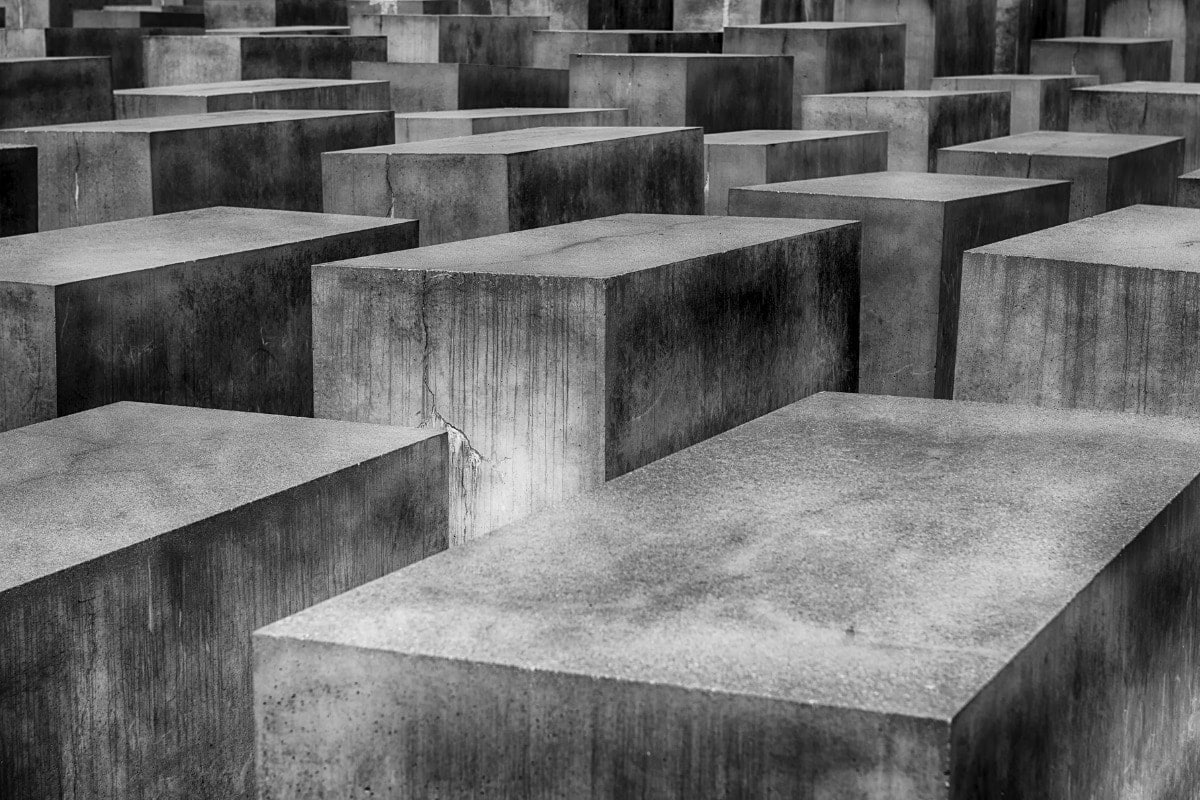
Checkpoint Charlie
Checkpoint C, known as Checkpoint Charlie, is the only border crossing between East and West Berlin that is located right in the city centre, the other two (Checkpoint A and Checkpoint B) are located outside Berlin.
There is a border booth on the site, which was returned here after German reunification in 2000. Soldiers dressed in period uniforms are standing in front of the booth holding flags of the occupying forces. If you want to take a photo with them, you can do so for a small fee. The original box was removed from the site after the fall of the Berlin Wall in 1990.
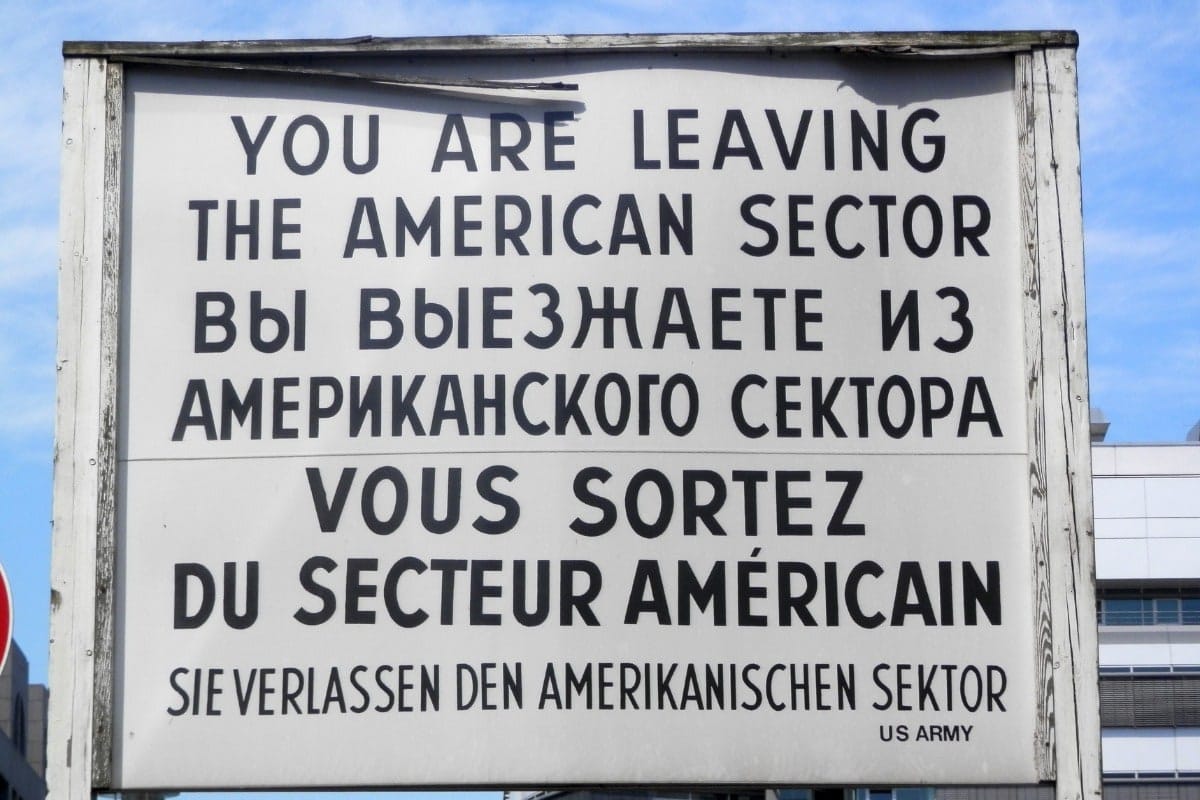
Charlottenburg Palace
Charlottenburg is the largest royal complex in Berlin, originally the summer residence of Queen Sophie Charlotte, from whom it takes its name. Today you will find the Porcelain Museum and the Museum of Prehistory and Early History. The palace is a UNESCO World Heritage Site.
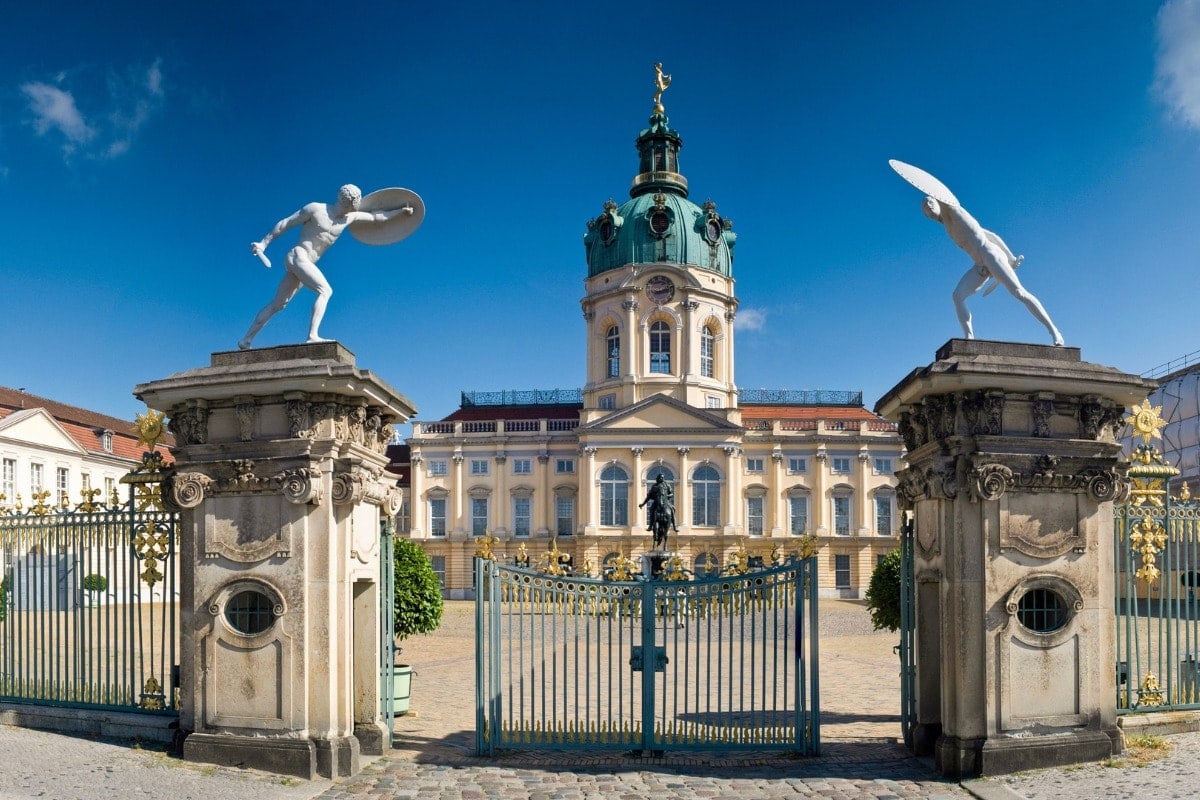
“The story of Berlin” museum
The “Story of Berlin” museum shows the history of the city in 23 rooms from 13. century (first mention of Berlin) to 1990 (reunification of Berlin).
This interactive exhibition is also fun for children and shows the everyday life of Berliners across the centuries. For example, you will learn how ordinary Berliners experienced everyday life during World War II.
The Berlin Wall
The Berlin Wall divided the German capital into two parts, West and East Berlin. It stood there from 1961 until 1989 and the crossing between the two sides of the city was forbidden for the whole time.
Today, the Berlin Wall Memorial stands along Bernauer Strasse. Here you will find a piece of the restored wall and a lot of information about this history on the plaques. You can also visit The Berlin Wall Memorial Museum.
Sachsenhausen Concentration Camp
The Nazi concentration camp can be found 25 km from the centre of Berlin in the village of Sachsenhausen. It was built in 1936 and two years later it was the headquarters of all concentration camps in Germany and beyond. SS members were also trained here to work in other concentration camps. Josef Čapek also spent almost three years imprisoned here. Today there is a memorial and a museum.
Museum of the German Democratic Republic
This novel museum replicates as closely as possible the times and everyday life in the GDR. It was created in 2006 and is interesting mainly because the authors of the exhibition tried to collect as many period items as possible and faithfully reconstruct e.g. ordinary apartments or shops. Most of the exhibition is interactive, you can visit it every day.
Sanssouci Palace
Potsdam Castle originally served as a summer residence for the Hohenzollern dynasty. It was built between 1745 and 1747 and is now a UNESCO World Heritage Site. Around the castle are breathtaking gardens. The castle opened for tourists after 2. World War II and after the reunification of Germany, the remains of the builder of the Sanssouci, Friedrich the Great, were deposited here. It is located in a tomb on the highest terrace in the garden.
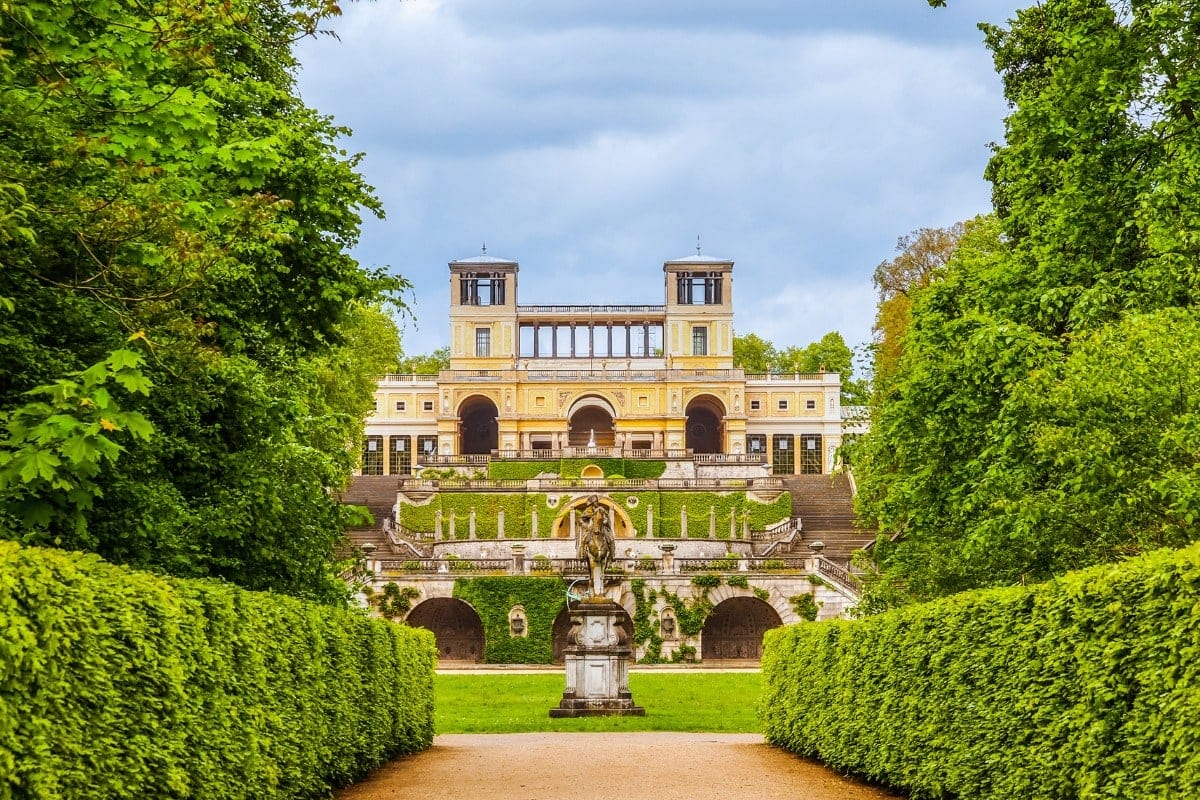
Potsdam
Potsdam is the capital of Brandenburg, one of the sixteen federal states of Germany. It is located at the border of Berlin, about 26 kilometres from its centre. In addition to Sanssouci Castle, there are many other sights to see, such as. the small Brandenburg Gate from the 18th. century, the Cecilienhof Museum, St. Peter and Paul or the Russian quarter of Alexandrowka with its wooden houses.
Weberviertel
The Czech colony of Nowawes in Potsdam was founded during the reign of King Frederick II. The Great. It was established as a refuge for Czech emigrants who fled the country because of their evangelical religion. In the centre of the square there is a church and a statue of Jan Amos Komenský. You can also see the original houses.
Kreuzberg
A district in Berlin known for its cafes, nightclubs, gay bars and bohemian atmosphere. If you want to enjoy the nightlife and a good coffee, then visit Kreuzberg. It is located along the banks of the river Spree and has about 150,000 inhabitants. In the past, Jews often settled here, today it is a place mainly for Turks. The Jewish Muezum and the Jerusalem Church are worth a visit.
Airport Tempelhof
Tempelhof Field is the former Berlin Airport, used primarily for business travel and also as West Berlin’s only connection to the world. The airport ceased operations in 2008 because its landing areas were too short for modern aircraft. Today you can come here to relax, as the airport has become the largest city centre park in the world. You can also take advantage of guided tours of the airport with an explanation of its history.
Hackescher Markt
The square in the Mitte district is the cultural and commercial centre of the city, with traditional markets every Thursday and Saturday, which are well worth a trip. In addition to the markets, you can also enjoy the colourful nightlife, and Hackescher Markt is now a rich cultural area.
Alexanderplatz
One of Berlin’s most famous squares was formerly a symbol of the GDR, later of unified Germany. It got its name after the Russian Tsar Alexander I. There are also important monuments and architecture, e.g. Neptune’s Fountain or Marienkirche.
Markthalle Neun
At this indoor market, you will have the opportunity to taste food from all over the world, visit interesting shops or enjoy cultural events. During the daily markets, you will find a selection of fresh vegetables and good coffee. Regular “street food” events are held here.
Mitte
Mitte is the centre of Berlin, which was an autonomous part of the city until 2001. It is the “heart of Berlin”, the centre of cultural, business and nightlife. The area includes many important buildings and monuments such as Museum Island, Brandenburg Gate, Checkpoint Charlie and much more. It also includes Alexanderplatz and Berliner Dom. The German river Spéva flows through the area, it neighbours e.g. with Tiergarten, Wedding or Kreuzberg.
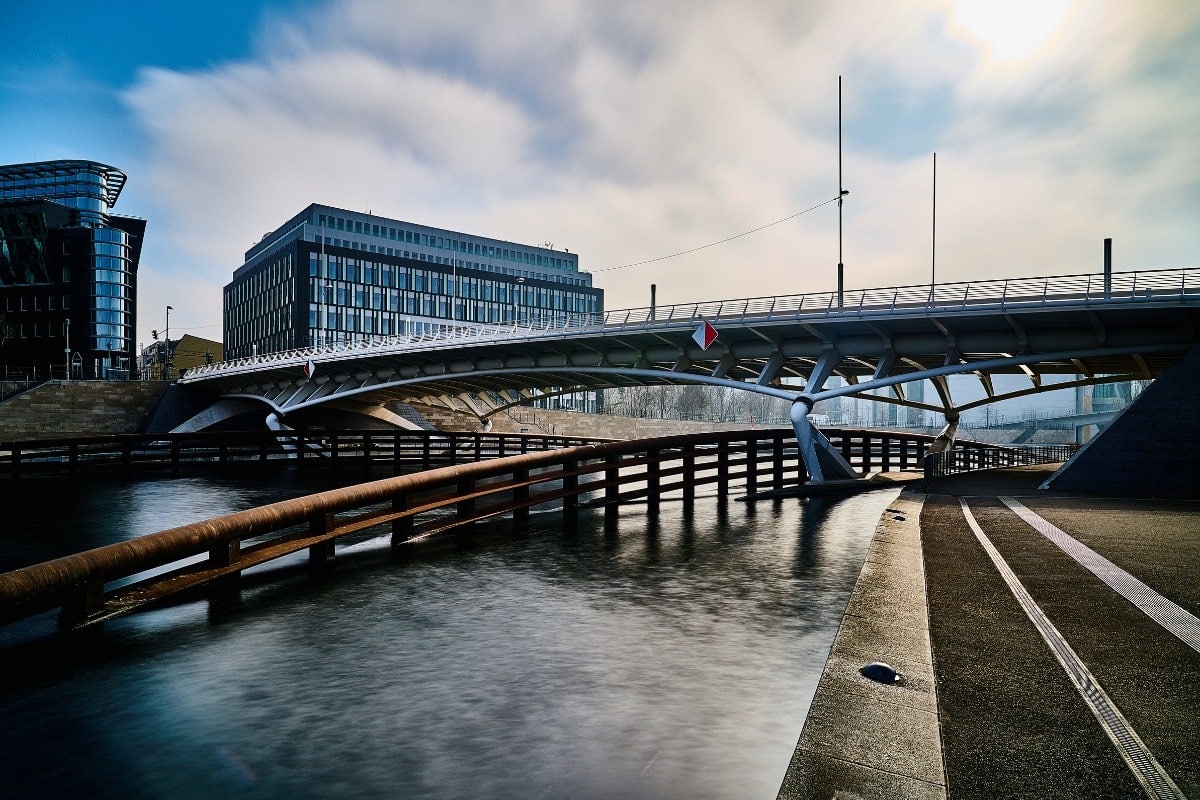
The best museums and galleries in Berlin
There are a lot of museums and galleries in Berlin, depending on whether you like history, contemporary art or science. But in Berlin there is something for everyone.
East Side Gallery
The largest continuous remnant of the Berlin Wall now serves as a gallery. The first artists began painting here in 1990, and in total you can see the works of hundreds of artists, not only German, that relate to the history of the wall. Artist Christine Mac Lean was the first to start this project.
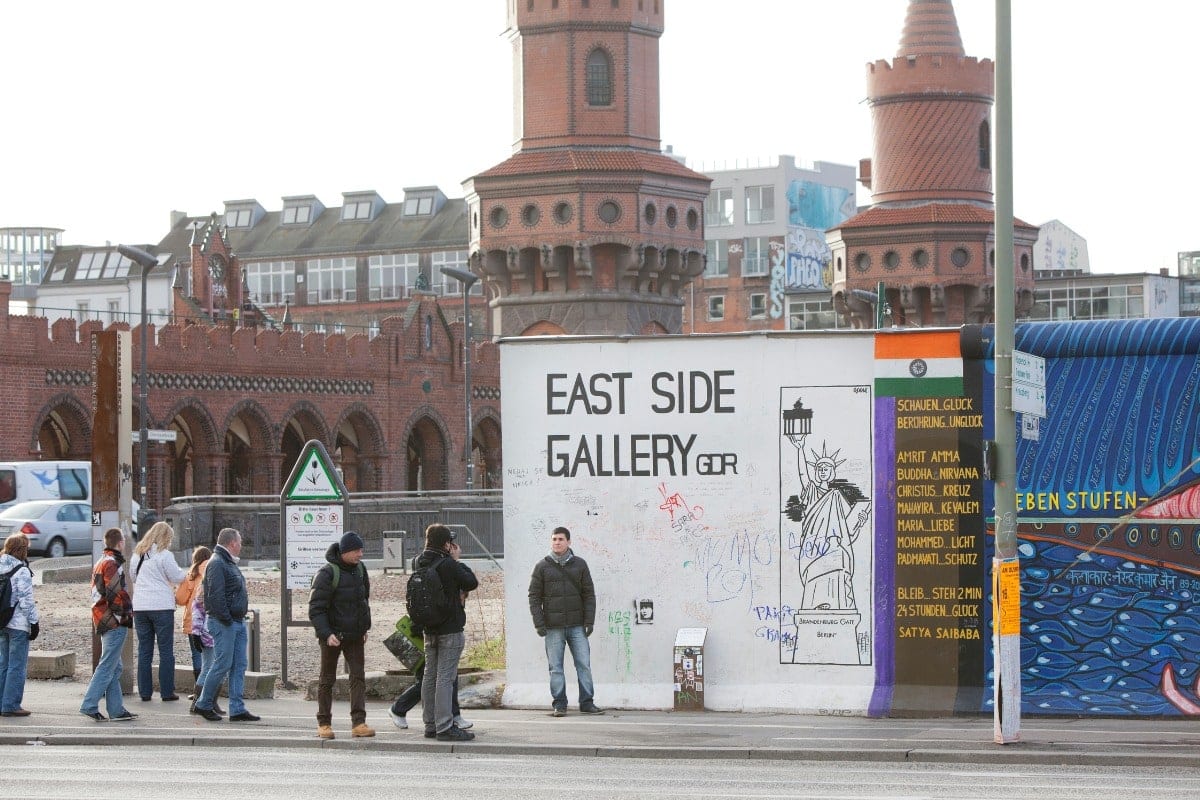
Hamburger Bahnhof Museum
Hamburg railway station is one of the oldest in Germany, having been closed in 1884. Today it houses the Museum for Contemporary Art.
Museum Island
In the centre of Berlin is the Mitte district, where you will find the famous Museum Island. There are five museums on the island: the New Museum, the Old Museum, the Old National Gallery and the Bode and Pergamon museums.
- The New Museum – the third largest collection of Ancient Egypt in the world.
- Old Museum – the oldest museum on the island, inside you will find Etruscan art and copies of ancient statues.
- Old National Gallery – modern art, paintings e.g. Cézanne, Monet and other important artists.
- Bode Museum – a collection of coins, medals and exhibits from antiquity to the 19th century. century.
- Muezum Pergamon – a collection of exhibits of ancient empires, e.g. Babylon or Uruk. There is a display of e.g. Babylon’s Ishtar Gate.
The best parks in Berlin
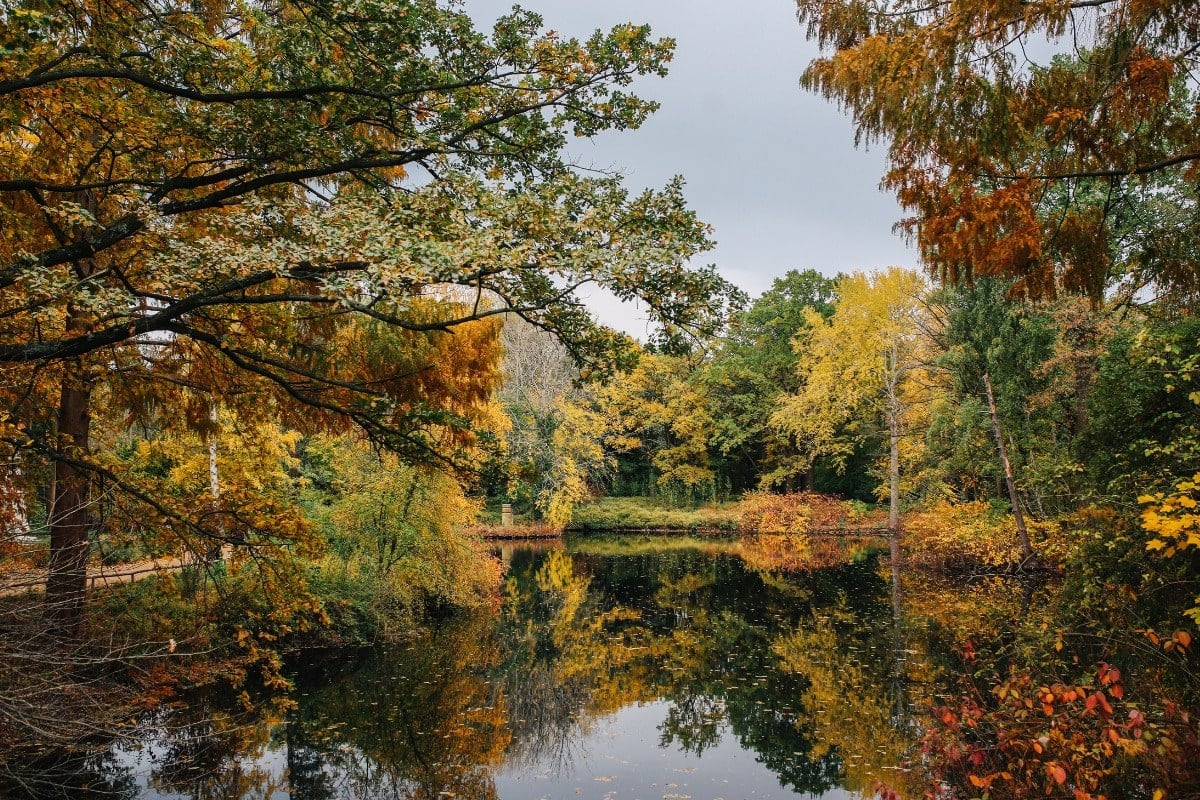
Tiergarten Park
Germany’s third largest city park, with the Arc de Triomphe at its centre from the 19th century. The park used to be a hunting area, since 18. century, it became a public park.
The park is especially good to visit with children, as today it houses the oldest zoo in Germany. The zoo includes an amazing aquarium and enclosures such as. and the giant panda, which is not found in any other German zoo.
Botanical garden
The Berlin Botanical Garden is one of the most important in the world, with over 22,000 species of plants. It is the largest botanical garden in Europe. Interesting is e.g. the Cactus Pavilion or the world’s largest water lily, the Royal Victoria.
Botanical Museum
It belongs to the botanical garden, here you will find a herbarium, plant preparations and a library. It is the only botanical museum in Western Europe that is dedicated to flora and presents its cultural and natural history.
Gärten der Welt
The Park Gärten der Welt in Berlin was originally opened under a different name in 1987. The current name translates as “Gardens of the World”, as there are smaller sections styled after gardens around the world.
The Chinese Garden was the first to be created in 2000 and the English Garden was the last to be created, 18 years later. You can visit Chinese, Japanese, Balinese, Oriental, Korean, Italian and English gardens. The largest of these is the Oriental Garden.
The best sights in Berlin – where to go for sunset and sunrise
If you’re wondering where to take the best photo of the city, try picking a spot from our list:
Welt Ballon – Berlin’s most interesting viewpoint
The Welt Ballon, the World Ballon, is one of the most interesting sights in Berlin. From a height of 150 metres, you will get an unforgettable view of the city from one of the largest balloons in the world.
It is located at Checkpoint Charlie in the centre of Berlin and flies over all the maracodraps in the area. From it you can see not only the Brandenburg Gate, the Reichstag, the Tempelhof Airport or the Tiergarten, but also many other features of the city. From the balloon you can enjoy a 15-minute view for 29 euros.
Teufelsberg
Another interesting view can be enjoyed from the top of the Teufelsberg, a hill made of war debris. It is located in the Grunewald area. Up on the hill are now long-dilapidated buildings that served as an American-British listening post during the Cold War. Nowadays, these buildings are open to the public, so in addition to the views, you have the opportunity to soak up some interesting history.
Humboldthain Flak Tower
Anti-aircraft towers were built by Nazi Germany in Berlin, Hamburg and Vienna. They served as shelters and also for defence against air raids. There were three such towers in Berlin, one near the zoo, one in Friendrichshain and one in Humboldthain. The first two no longer exist, the third one can still be visited. The tower was partially demolished after the war, the preserved part of the tower is now a viewpoint over the town. The interior is also open to the public.
Panoramapoint
A place from which to enjoy spectacular views of Berlin. You’ll find the building on Potsdamer Platz and the fastest elevator in Europe takes you up. See the Brandenburg Gate, the Arc de Triomphe and other sights of the city. The last lift leaves every day at 17:30. In addition to the observation deck, you can also visit the café and museum in the building. You can enjoy an hour-long view from 7 euros per person.
Map with points of interest on your phone
Save a map of the best places in Berlin directly to your phone. After purchase, you will receive a link to a non-public Google Map, which you can save by clicking ”Follow/Follow”. This will copy it to your Google account and display it on all devices where you use Google Maps.
List of interesting festivals and events in Berlin
Berlin hosts dozens of festivals throughout the year, here are some of the highlights:
- Carnival of Cultures – an annual festival that celebrates the cultural diversity of the city and includes a carnival costume parade, dance performances and markets.
- Berlinale – The Berlin International Film Festival, held in February, showcases the latest films from international filmmakers.
- Maifest – May is celebrated in Berlin every year with this festival that includes traditional German food, beer, music and dancing.
- Fête de la Musique – an international music festival that takes place in June and offers free concerts by various musical groups at different venues around the city.
- Christopher Street Day – a celebration of the LGBT community in Berlin, held annually in July, including a big parade, dance party and other events.
- Berlin Music Week – this event takes place in September and offers many concerts and music festivals, including the Berlin Festival, which takes place at the former Tempelhof Airport.
- Festival of Lights – an annual festival of light installations held in October that brings the city to life with an evening of illuminated monuments and buildings.
Christmas markets in Berlin
Christmas markets are held in various locations around the city from November to December, here’s a list of the most interesting ones:
- Gendarmenmarkt Christmas Market – Located in the heart of the city, this Christmas market features a diverse range of vendors selling punch, sweets and various handicrafts.
- Alexanderplatz Christmas Market – Alexanderplatz is one of the largest squares in Berlin, so it’s no surprise that it’s also home to one of the biggest Christmas markets. You can shop for Christmas gifts, decorations and sample traditional Christmas dishes.
- Christmas Markets in Charlottenburg – Charlottenburg is one of the oldest districts in Berlin and its Christmas markets are among the most popular in the city. This market is located in front of Charlottenburg Castle and offers Advent wreaths, candles and various Christmas decorations.
- Christmas Marketsin Rixdorf – Rixdorf is a small area in Berlin, but you can soak up the historic atmosphere.
- Christmas Market on Potsdamer Platz – Another very large square where you can find a market with sweets, decorations, Christmas wreaths, you can taste punch or buy some themed gifts.
